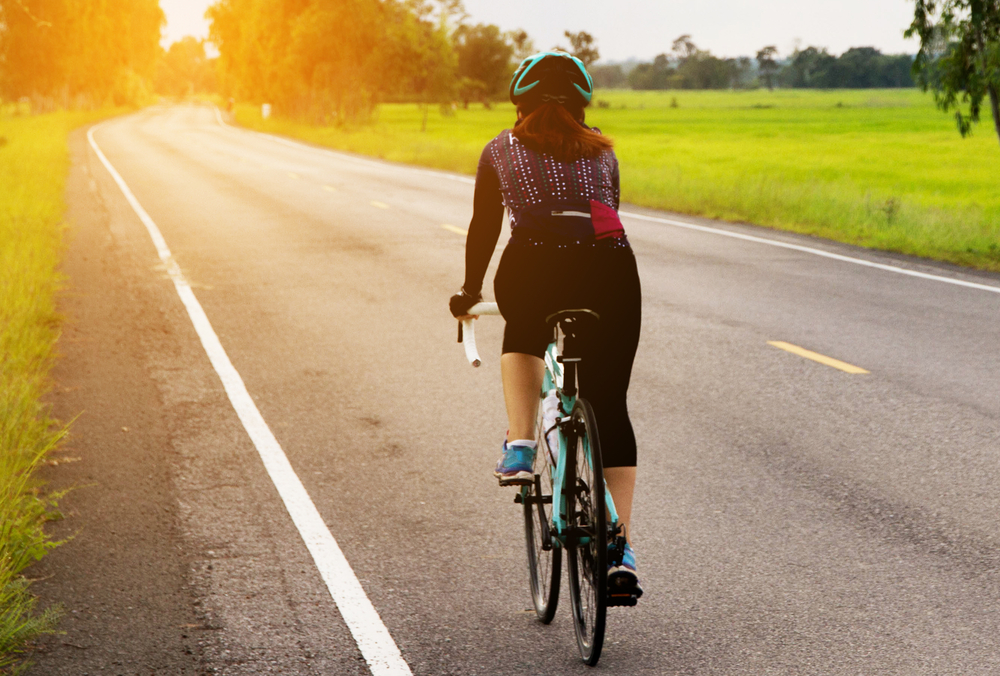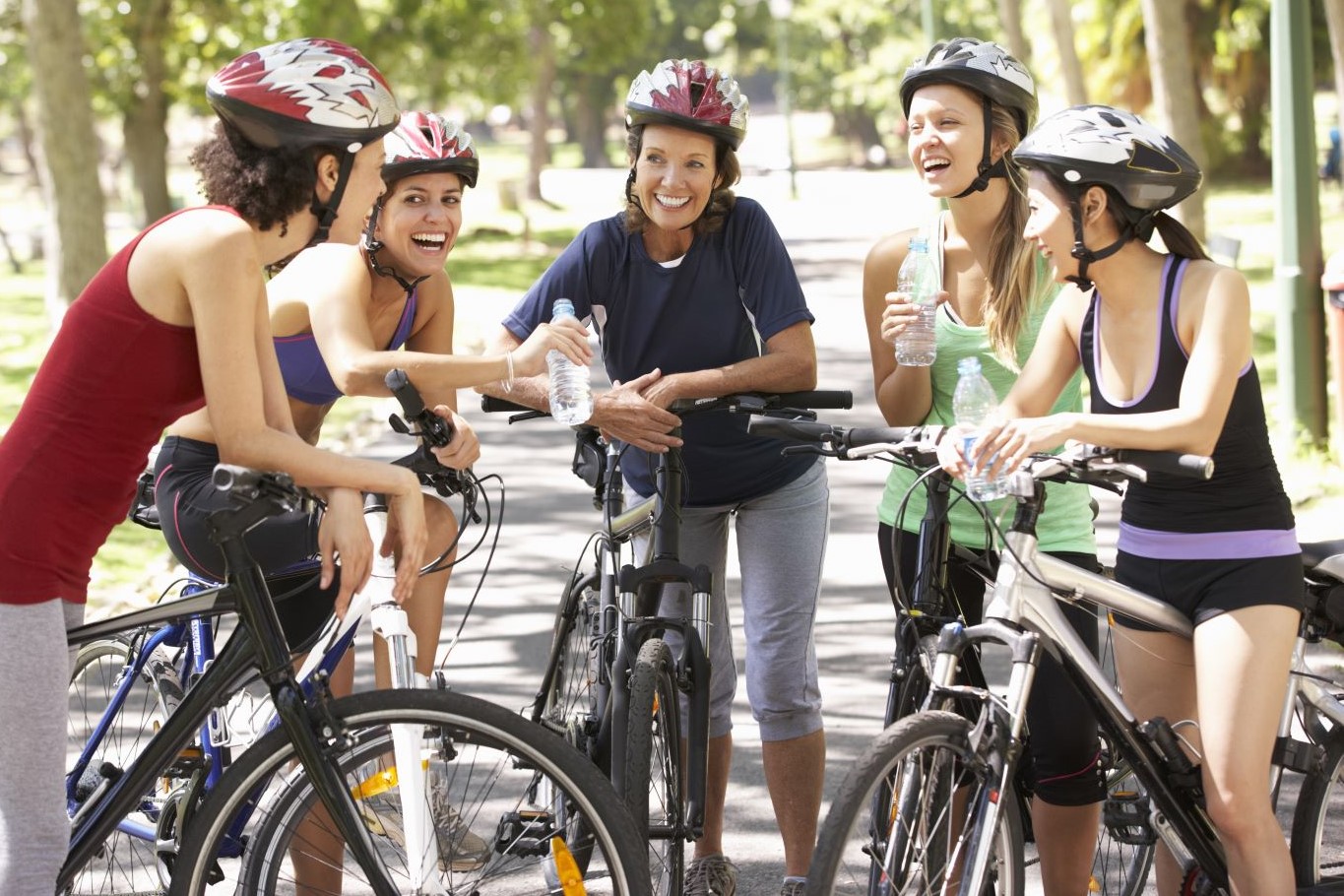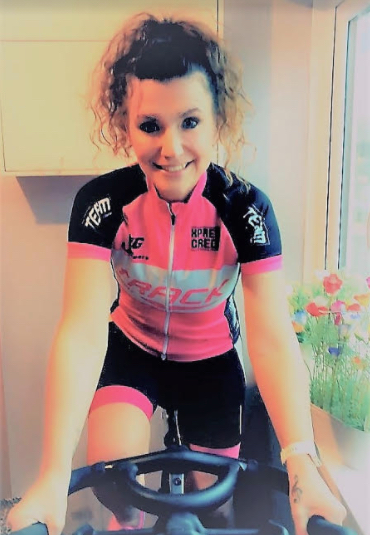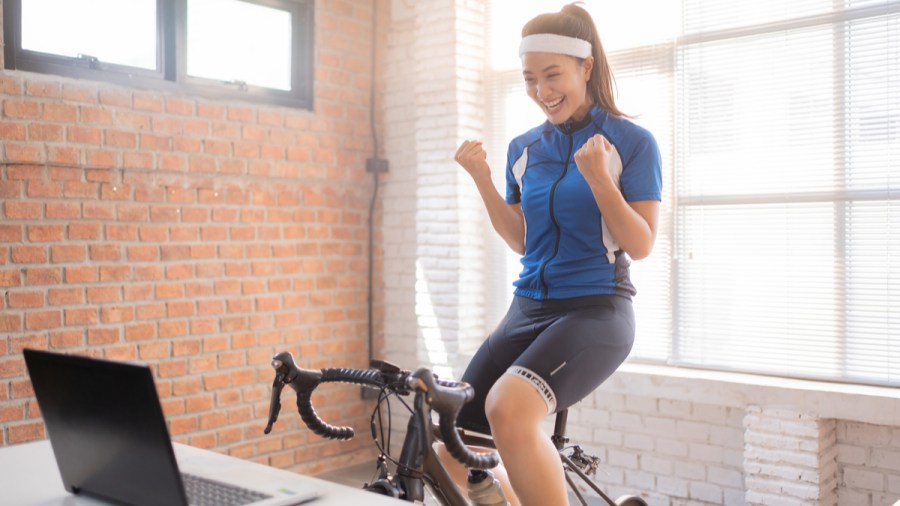Cycling: it’s low impact, you get an amazing high and can do it both indoors and outdoors. What’s not to love? Add in cycling for weight loss and you’re on to a winning combination. Here’s how to pedal away the pounds…
By Leona Gerrard
Getting started with cycling for weight loss
When it comes to cycling, before you even think about shifting pounds, you need to familiarise yourself with being on the bike, according to Togo Keynes, co-founder and head coach of Njinga Cycling. ‘Begin slowly and don’t commit to too much at the start,’ says Keynes. ‘You want to build up gradually while gaining confidence – and enjoy your cycling. Don’t push yourself so hard you dread going out on the bike.’
Keynes has worked with a number of women needing help getting fit or losing weight post-pregnancy. They were all new to the sport, but caught the cycling bug fast. ‘It’s important to remember to start steadily and ride zone 2 efforts (the fat-burning endurance zone that should feel like a5/10 perceived effort),’ says Keynes. ‘This is a fairly low intensity and the best way to begin working on losing excess weight.’ Keynes recommends beginning with riding 3-5 times a week for 20-30 minutes for four weeks, then building up to 30-40 minutes and increasing by 5-10 minutes every four weeks until you get to 60 minutes.
‘Once you are riding comfortably for an hour, you can increase the perceived level of exertion from a 5/10 to a 6/10 effort for the last 20-30 percent of the ride,’ he says. ‘This will help you build a good solid fitness base. When rides start to feel much easier, you can increase the intensity and duration bit by bit.’

Complement your cycling with other exercises
What about cross-training? Will this help you shift the pounds on the bike?
‘Absolutely!’ says Keynes. ‘A 30-minute strength and conditioning session 2-3 times a week can really help to boost your weight loss.’ Targeting key cycling muscles, such as the quads, glutes and hamstrings will improve your power on the bike and tone up your body.
‘Resistance training helps build muscle mass and elevates your metabolism for longer. This is particularly helpful when focusing on weight loss,’ he says. But finding the time and head space isn’t always easy. Keynes suggests choosing an organised cycling event to work towards and then start training for it. ‘Getting focused on a goal can often provide the incentive to stay focused,’ he says. ‘Even if it’s just your own goal distance by a certain date, start training for it. Keep a record of your sessions to track improvements both on the bike and with your body. There’s nothing more motivating than seeing the kilos slowly start to drop off or the miles you can do in your 30-minute session slowly start to increase.’
Keep moving forward, both literally and figuratively, urges Keynes. And be accountable for your rides. ‘Ride a few times a week with a friend or join a live online class where you have coach support and encouragement,’ he says. ‘If you are using an indoor bike, put on a great podcast to distract you.’ Whatever you do: ‘Don’t let one bad day be the one that breaks your momentum. Put it aside and start again the next day.’

Cycling for weight loss: one woman’s journey
 Rachel Perry, 46, from Redditch, is a mum of two boys and a master trainer for the personalised indoor cycling app Ciclozone. Here, she explains how she overhauled her body on the bike…
Rachel Perry, 46, from Redditch, is a mum of two boys and a master trainer for the personalised indoor cycling app Ciclozone. Here, she explains how she overhauled her body on the bike…
‘After having children, I gained a lot of weight and found it so hard to shift. I was a member of a gym and took group exercise classes but seeing myself in the mirrors did nothing for my self-confidence. My mental health really suffered. I stayed out of all photographs, so I have very few of me from when the children were babies, and I was diagnosed with depression and prescribed antidepressants. I knew I needed to do something but I couldn’t face the mirrors and feeling on the outside of the gym clique. But then my gym refurbished the Spin studio with blacked-out walls, disco lights, and not a mirror in sight, So I decided to give indoor cycling a go.
‘I needed to do something.’
‘I was really nervous at first; I didn’t want to feel out of my depth, but I ventured into the studio wearing my husband’s baggy tops and loose joggers and sat at the back, trying to keep up with the music and instructions. Being inside meant I felt safe and could hide, so I decided to do two classes a week, walking as much as I could in-between and cutting out junk food and alcohol while increasing my water intake. I didn’t follow a special diet. I just ate healthily and had the occasional treat.
‘The weight started to come off after a month of being on the indoor trainer. That spurred me on to keep going. Over time, I built up enough confidence to give outdoor cycling a go, too. I was lucky to find a cycling group called Club Velo 365. They made me feel so welcome and took the time to support me on my rides.
‘That piqued my interest in “power cycling”, so I researched it and took my fitness qualifications. The tech talk can seem intimidating at first – indoor bikes have all sorts of numbers and readings – but you don’t need to get into all that unless you want to. The key is to get a feel for how much effort you’re putting in so you can manipulate your energy system to become a fitter, more efficient rider.
‘Just give it a go.’
‘Thanks to cycling, I lost over four stone in two years. It wasn’t linear but the process was positive for my physical and mental health. I’m now teaching my own classes and no longer need medication. Getting started is always hard but the key is to not put pressure on yourself. Just give it a go. People who genuinely love cycling won’t care what you’re wearing, how much your bike cost or how far you’re going. The only bad ride is the one that didn’t happen.’








